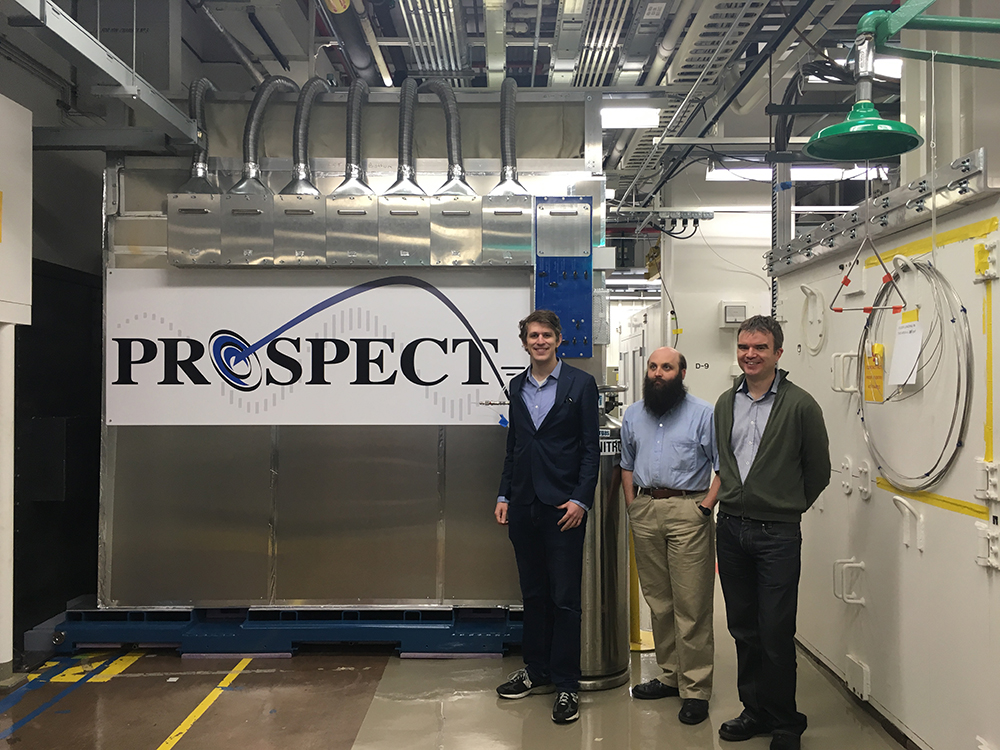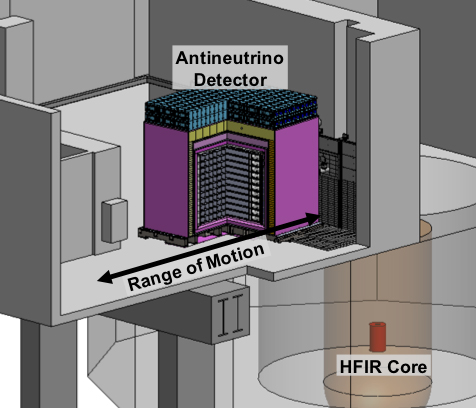The Precision Oscillation and Spectrum Experiment (PROSPECT) is a reactor neutrino experiment at very short baselines to make a precision measurement of the flux and energy spectrum of antineutrinos emitted from nuclear reactors.
Research
PROSPECT will search for the oscillation signature of sterile neutrinos and test our understanding of the emission of antineutrinos from the fission products in a nuclear reactor. The measurements of PROSPECT will test our understanding of the Standard Model of Particle Physics, deepen our understanding of nuclear processes in a reactor, and help develop technology for the remote monitoring of nuclear reactors for safeguard and non-proliferation.
PROSPECT recently completed detector installation and reported first results, measuring antineutrinos over a range of distances only 7–9 meters from the from the 85 megawatt High Flux Isotope Reactor core. In this location, there is very little cosmic-ray attenuating overburden and significant background radiation caused by the reactor itself.
To operate in this very challenging environment, PROSPECT developed a highly sensitive detector system that is able to distinguish approximately 1000 antineutrino interactions per day from the numerous background events (many 1000s per second). The key technical elements are the use of liquid scintillator that can distinguish electron-like, fast neutron-like, and neutron capture signals and an efficient, low-mass optical segmentation system. These allow PROSPECT researchers to identify and localize the relatively infrequent antineutrino signals.
This new capability to detect antineutrinos at the surface of the earth and in a high background environment fulfills a long-standing goal of the applied antineutrino physics community. Near-surface antineutrino detection will allow detectors to be placed at essentially any reactor facility and to use the highly penetrating and un-maskable antineutrino signal for monitoring and safeguards measurements.
Collaboration
PROSPECT is supported by the DOE Office of Science and the Heising-Simons Foundation.
More information about the collaboration is available on Yale University’s PROSPECT webpage.









